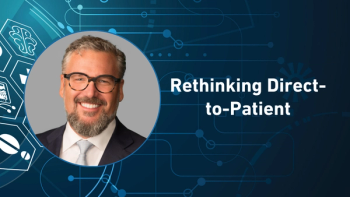
How pharma and HCPs can support backlogged pandemic patients
Focusing on key groups will drive the greatest impact in health outcomes
Amid all of its societal upheaval, Covid-19 also drove major advancement in every aspect of life sciences—from drug development to physician engagement. In contrast, it caused setbacks in non-Covid-related healthcare, as concerns of transmission reduced doctor visitations and new prescriptions by more than 30%.1
By understanding which Americans may have fallen behind in managing their health amid the pandemic, pharmaceutical companies can better target the right doctors and introduce them to key new medicines that will help patients most in need.
To learn about pre- and post-lockdown behaviors, Takeda and Veeva analyzed thousands of anonymized health and consumer data points across 300 million US patients. This research uncovered patient and prescriber trends by probing various big data sources, including aggregated phone-based mobility data, macroeconomic data, prescription fills and visits to healthcare providers (HCPs).
The inequity across demographic groups was clear. During the height of lockdowns, 62% of active patients were responsible for nearly 80% of the drop in new prescriptions. Utilizing machine learning, analysis uncovered several factors that contributed to the decline in treatments.
More chronic health issues, less treatment
One concerning finding was the group whose new prescriptions dropped the most last year: those with higher rates of chronic health issues prior to Covid. Given their higher-than-average prescription fills and HCP visitation before the pandemic, these dramatic decreases in new medications could negatively impact patient outcomes.
Financial factors likely created another barrier to healthcare, since 71% of this patient group has a household income under $75,000. With 46% of lower-income people saying they have had trouble paying their bills since the pandemic started,2 this ongoing financial instability increases the gap in healthcare utilization.3 Both net-new and more advanced medications may have seemed out of reach for them.
Among patients with the largest decreases in treatment, analysis revealed three core segments:
1) Lockdown parents
This sub-group is made up of suburban parents with higher income than most others who reduced medication fills. They make up 29% of active US patients, have higher rates of common conditions like high blood pressure or diabetes and tend to be fairly early in typical regimens.
As middle-class workers, they found themselves in lockdown with their children— managing remote school, facing anxiety about work and losing time and routines for self-care. Consequently, many deprioritized their own health, having less check-ins with doctors and filling 30% fewer new prescriptions than the average patient.
2) At-risk older adults
This segment includes older (with an average age of 62), predominantly female patients in rural and suburban areas. These individuals make up one-quarter of patients, average 3.5 conditions each and represented 42% of total prescription fills before Covid.
Fifty-seven percent of these patients had household income under $50,000, but many were not yet eligible for Medicare. Disruption of income last year may have impacted their regular prescription fills and delayed the start of more advanced treatments requiring higher out-of-pocket costs.
More than half of these patients did log a doctor visit during May and June of 2020. This suggests that their decrease could also have been influenced by HCPs who elected to delay treatment changes due to Covid-related limitations.
3) Single, low-income young adults
The largest overall decrease in new prescriptions (a 43% drop by June 2020) came from a small group of young, single, low-income patients who represent only 9% of actively treated Americans. This segment has proportionally high rates of health issues, with approximately half being treated for depression or obesity. In the case of obesity, this potentially puts them at increased risk for Covid complications and may have led them to make more conservative lockdown choices.
In addition, their 25% lower college education rates suggest a higher employment risk, which can contribute to treatment insecurity. Though these patients were 34% more likely to use telehealth, their overall primary care visitation decreased by 15% and total prescriptions dropped 16%.
What we can learn from pandemic patient behaviors
As new prescription rates now return to pre-Covid levels, there’s still a large backlog of patients who skipped starting new prescriptions last year. In order to reach them, pharmas need to continue to educate physicians on new medicines. Commercial teams can better equip those HCPs by identifying lingering patient needs and helping to overcome financial constraints to treatment.
Helping providers reevaluate advanced treatments
First, field reps should make sure HCPs recognize the extent of the current prescription backlog. They can help physicians reprioritize their patients’ needs by proactively sharing helpful information about advanced treatment options they may have previously overlooked.
In categories such as mental health, 41% of adults now report symptoms of anxiety or depressive disorder, up from 11% pre-pandemic.4 While some patients started treating this last year, it’s worth noting that many have not yet found their best treatment paths. Some, like older at-risk adults and single, low-income young adults, experienced 20-30% decreases in new mental health prescriptions. Companies can help providers bridge this gap and get the best medicines to their patients.
Promoting targeted affordability programs
National unemployment remains about 50% above pre-Covid rates,5 leaving many US workers on precarious financial footing. Low-income patients who decreased new prescriptions may still be struggling to afford treatments. Companies that effectively define and promote affordability programs to the right target patient populations will benefit by increasing their reach.
With the Delta variant still spreading throughout the US, the impact of Covid on patient behaviors is far from over. Data analysis can be a useful tool for life sciences organizations to help physicians better focus on key groups of patients who can most benefit from starting critical treatments. Targeting education and access to important new medicines for these patients can disproportionately impact healthcare outcomes.
About the authors
Eric Solis, PhD (left), heads up commercial data science for Takeda Pharmaceuticals’ USBU. Mark Schulman (right) is senior director, Veeva Crossix, head of Crossix Insights.
References
1. Veeva Longitudinal Patient Data, 2021
2. Pew Research Center, “
3. National Academies of Sciences, Engineering, and Medicine, “
4. Kaiser Family Foundation, “
5. U.S. Bureau of Labor Statistics, “
Newsletter
Stay ahead in the life sciences industry with Pharmaceutical Commerce, the latest news, trends, and strategies in drug distribution, commercialization, and market access.




